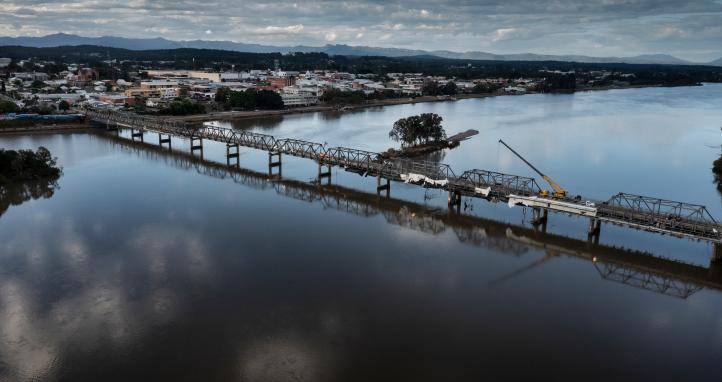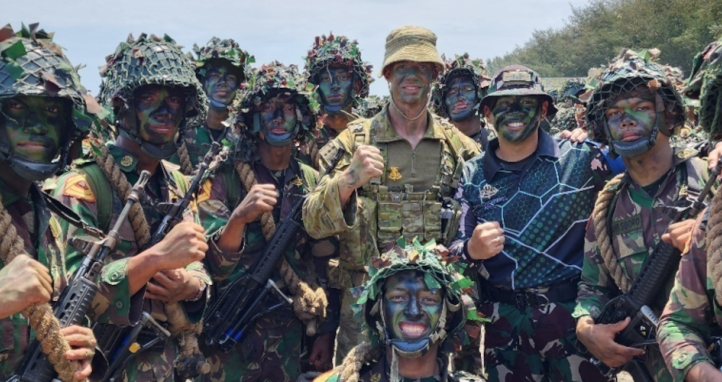The importance of resilience has been highlighted in a number of recent Cove articles - The Combat Mindset: Increasing Lethality and Resilience, Emotional Intelligence, Leadership and Resilience, and Mental Resilience Training via 5 RAR and the British Army's School of Infantry. More recently, Commander Forces Command released a three part guide to assist commanders in understanding and developing resilience in units stating that it remains one of his top three priorities for the year.
While many articles identify the benefits of resilience as part of an effective and sustainable unit training plan, there is little discussion on how initiatives will be measured to ensure they are achieving an effective outcome. While valuable research has been conducted on understanding resilience in the context of Army, including Strengthening Resilience in Military Cadets: An evaluation of the Mental Fitness Training Program [1] and Enhancing Mental Resilience in Defence through Adventurous Training [2] the existing body of research is limited. With the current focus on resilience, now presents a great opportunity to establish an Army wide, evidence based approach for measuring outcomes that will inform initiatives well into the future. As such, this paper argues why Army should invest more in measuring resilience and suggests ways this can be achieved.
What is Resilience?
According to the American Psychiatric Association, resilience is defined as 'the process of adapting well in the face of adversity, trauma, tragedy, threats or significant sources of stress.' in short, it is "bouncing back" from difficult experiences. While this seems simple enough, when you delve deeper into the concept, you find it is a multi dimensional and complex paradigm that includes a combination of individual, social and environmental factors. The Forces Command (FORCOMD) Resilience Plan (2015) adds additional context, defining resilience as 'the capacity of individuals, teams and organisations to adapt, recover and thrive in situations of risk, challenge, danger, complexity and adversity'. Based on this definition, a framework was developed for the implementation of resilience initiatives across the command which began in early 2016. As part of the framework, resilience domains and their associated components are identified at the individual, team and organisational level as depicted in the table below.

Table 1: FORCOMD Resilience Framework - Resilience Domains & Components (abridged version)
Why the need for measurement and evaluation
Before tackling how resilience can be measured, it's worth exploring why measurement and evaluation is so important.
Accurate data collection is the foundation for analysis and evaluation which is a key characteristic of a learning organisation. Without a solid basis for evaluation, decisions are informed by nothing more than assumptions. Not only does evaluation allow for organisational accountability and transparency, it provides a tangible understanding of progress that drives continuous improvement. Measurement and evaluation builds an evidence base of initiatives that work, and conversely of those that don't work. This means decision-makers are fully informed when approving ongoing investment and/or extending a program. In a fiscally constrained environment, understanding outcomes is critical if programs which are achieving maximum benefits for Army are to continue to receive funding and resourcing.
Having a better understanding of the tools and programs currently available to Army would help reduce duplication of effort, and promote consistency and knowledge-sharing between units, based on best practice. It would also align the delivery of programs to maximise resilience outcomes. For example, conducting BattleSMART (one of the suite of Self Management and Resilient Training (SMART) programs included in the ADF Mental Health Strategy) prior to adventurous training provides individuals with coping and stress management strategies which they can then apply during stressful situations.
Considered a major component of 'psychological capitol', resilience manifests itself in positive organisational behaviour. As such, understanding the outcomes of resilience initiatives would help Army appreciate the role and impact of its customs and traditions, beliefs and values as they relate to the individual, team and organisation. This knowledge would help inform the progress of cultural programs such as the Pathway to Change reforms, and the effectiveness of support services to personnel and their families.
The FORCOMD Resilience Plan
The FORCOMD Resilience Plan includes four lines of effort (LOE): Awareness; Build and Strengthen; Recovery; and Management. LOE 4 (Management) states that the base-line level of resilience will be identified and measurement commenced during Phase One of the plan (Development Phase, 2016), with ongoing evaluation conducted to assess the success of implemented initiatives during Phase Two (Consolidation Phase, 2017-18). The Force Generations Lessons Board, which is conducted annually, was identified as the means by which Formation and Training Centre representatives would report on resilience initiatives with a FORCOMD desk officer appointed to coordinate day to day activities and monitor ongoing evaluation.
While evaluation is recognised as an essential part of the Plan (as it is for all training plans) it is not clear to what degree it is being undertaken. Furthermore, it is questionable whether enough investment has been made to achieve a whole of Army approach that will allow units to evaluate their initiatives independently. While a 'bottom up' approach can produce effective results, it relies on individual knowledge and motivation which is often hit and miss. A centralised approach would enable Army to map and understand the 'interconnectedness' of its human performance and resilience initiatives, and their respective outcomes, increasing the reliability and validity of data collection and analysis.
In this context, meaningful evaluation is more than the percentage of personnel who have completed various types of resilience training or the number of adventurous training serials conducted in a given year (which seems to be the current form of measurement).[3] Rather, it requires a combination of subjective and objective measures taken regularly over a period time.
Can Resilience be measured?
I would argue yes, although it is recognised there are limitations with existing resilience measurement instruments as they rely on individual perception or 'self-ratings' which can differ greatly from person to person. There is also no existing test or assessment that will enable a commander to determine which unit members will or will not be resilient in the face of adverse circumstances. While there is no recognised 'gold standard' assessment that will yield conclusive results, over time, trends can be established that may help determine environmental triggers and behavioural warning signs.
For a more technical or scientific solution, there is research that examines the impact of emotional intelligence training using biological measures of hormones (cortisol) and immune function (IgA) as objective indicators of stress, which can inform a more objective evaluation than current subjective methods. Further study and ongoing data collection would require significant investment in the form of uniformed personnel, Defence Science and Technology (DST) Group and civilian specialists in the field of behavioural psychology, organisational psychology and psychoneuroimmunology. While the cost of this may seem prohibitive, there are initial steps that can be taken now that can lead to a more comprehensive study in the future.
What and how to measure?
According to the FORCOMD Resilience Guide - Part 1, Understanding Resilience, 'resilience is only observed after an adverse event is experienced'. As such, individuals need to be provided with training that will test and/or develop their capacity to adapt, recover and thrive. The Resilience Training Principles outlined in table 2 specify that units are to use evidence based/informed initiatives as well as standardised measurements; however, there seems to be little guidance on what, how, and how often to measure.

Table 2: Resilience Training Principles - Commanders Guide to Resilience - Part 1
As a starting point, the resilience components identified in table 1 can be used as the 'what to measure'. The how to measure might include existing resilience measurement tools, such as the Connor-Davidson Resilience Scale,[4] which is typically administered before and after an activity to provide a comparison of an individual's thoughts and behaviours. This, in conjunction with participant observation (a third party perspective), interviews and surveys, can provide a relatively detailed picture.
While limited by available technology, physical measurement is also achievable at a reasonable cost. For example, most units have access to heart-rate monitors and there is existing research within Army on how to analyse the data to affect an outcome (a solid argument to collect physiological data has been made by Dan Skinner via The Cove). Due to society's recent penchant with health and fitness, there are a number of low cost commercial options available. For example, digital health and well-being monitors such as WHOOP or FITBIT also provide analytic services. Collecting and collating the data is a formidable challenge. However, with ongoing command commitment, certain measures can be introduced to ease the burden. This might include a resilience research project, academic fellowships and scholarships as well as training dedicated staff within units.
Conclusion
Resilience is a current focus within Army and rightly so. As demonstrated by the FORCOMD Resilience Plan, the concept of resilience is both broad and complex, merging physiological, psychosocial and psychological factors in a way that is unique to each individual. In order to understand the outcomes achieved from resilience initiatives, Army must provide greater investment for evaluation and commit to further research. Without this, the effectiveness of any intervention is merely anecdotal.
Acknowledgement: Adventurous Training Wing (ATW) are taking steps to understand how to measure resilience using adventurous training and this paper forms the basis of framing the research problem. Thanks to WO2 Mick Young for the discussion on resilience which informed this piece.




